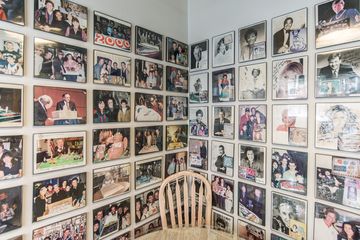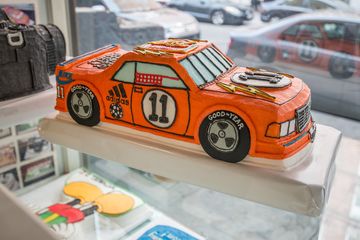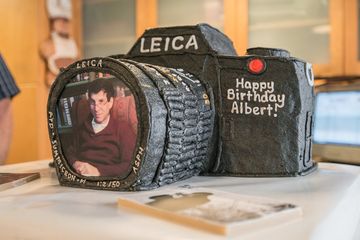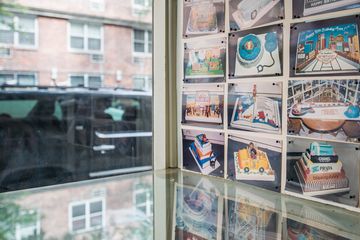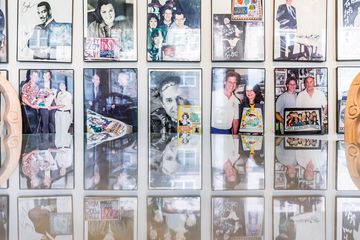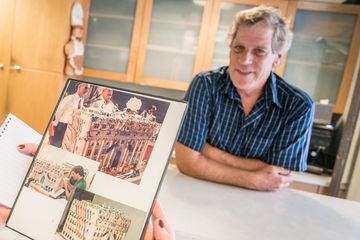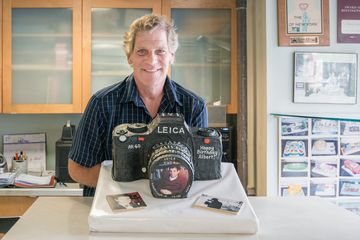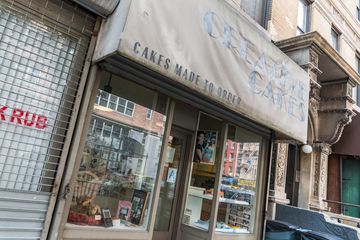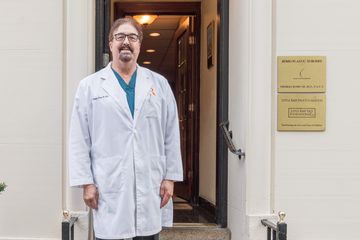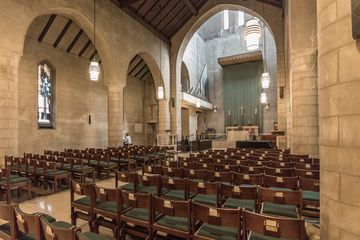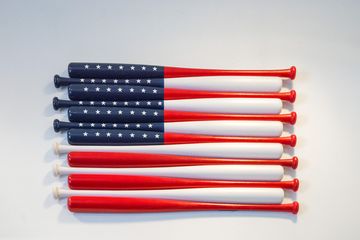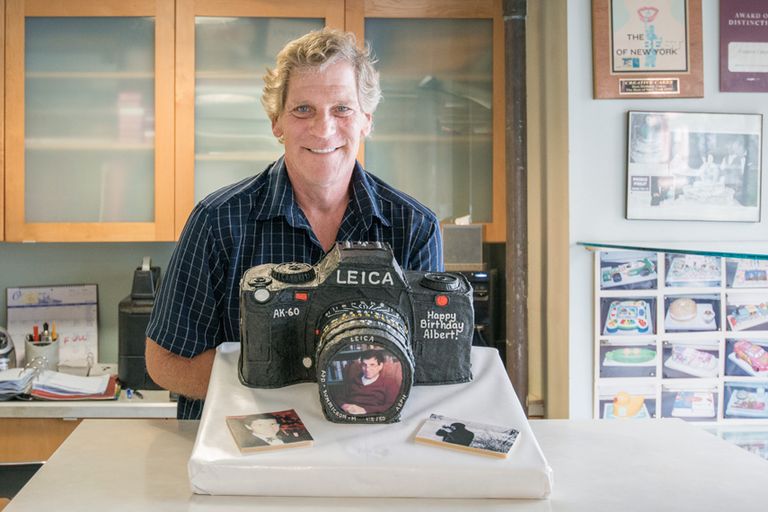
Many times, when I see decorative cakes with towering sculptures of fondant and intricately molded details, I find myself preferring to look at them rather than eating them. This is not so with Bill Schutz's masterpieces at Creative Cakes; the perfectly crafted desserts, each made with a chocolate fudge base and buttercream frosting, are absolutely worth devouring.
Bill never realized that he would make a living baking cakes. Back in high school, he would create cakes for girls' birthdays in his youth group. "I was doing it for the fun of it out of mom's kitchen," he explained, and then went on to tell me that he had never received any professional training as a baker. "It came naturally." His hobby stuck with him, even after he earned a degree in biology. In 1979, he began working at a cake shop. The Creative Cakes company became Bill's in 1985, and he has been astonishing people with his edible creations ever since. Bill was pleased to tell me that most of his business has come via word of mouth, with the frequently uttered reaction to his desserts being, "Where'd you get that cake?"
Bill is adamant about his chocolate-fudge-and-buttercream-frosting combo. If someone is desperate for a vanilla cake base, he will pop open a box of Betty Crocker, but otherwise he sticks to his tried-and-true recipe. His tasty decorative cakes, which he has constructed in every shape from Yankee stadium to personalized Monopoly boards, have been especially popular among celebrities. The small storefront is filled with photographs of famous figures cutting into his cakes. Sports Illustrated even put a picture of Muhammad Ali holding his 50th Birthday cake, made by Bill, on the cover. Bill was especially excited when Michael J. Fox asked him to make a cake. He has always been an enormous fan of the actor, and when the party planners found out, they invited Bill to meet him.
When I asked Bill if there was a particular cake that stood out in his mind through the years, he pointed to a photograph of one that he made for the Statue of Liberty's 100th Birthday. It was an enormous construction, covered in a detailed architectural icing design, featuring the Statue of Liberty at its center. He also showed me a cake that was covered in colored writing - "I love the way my writing turns out," he laughed. It had been requested by an employee at the Museum of Modern Art. He called it a "head trip" when someone who worked in the art world requested one of his cakes. When asked if he had a favorite creation over all these years, he replied, "Once they're made, I'm always proud of them...I put my heart and soul into each one."
I was very happy to hear from Bill that the specialty cake community is a kind and close-knit one. When I pointed out a cake in his book that had an image printed on it, as opposed to his usual detailed icing work, he proudly said that his wife helps him with the photo printing, since she is better with computers. He added, however, that he often suggests people go to Edie at Cakes 'N Shapes if they want a printed cake, while she often sends those who want free form cakes Bill's way. When I commented that it seemed like a very friendly, joyous industry to work in, Bill agreed. "It's nice because you get to make people happy. I'll never be a billionaire, but I love my job."
